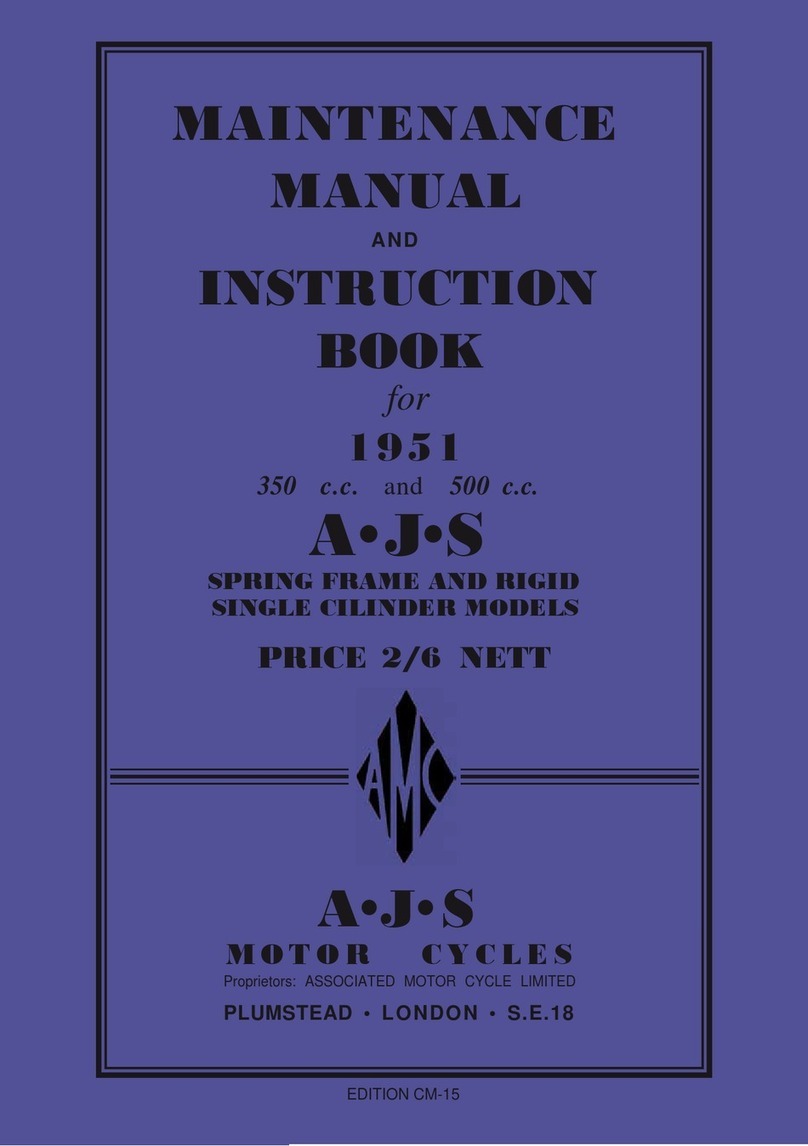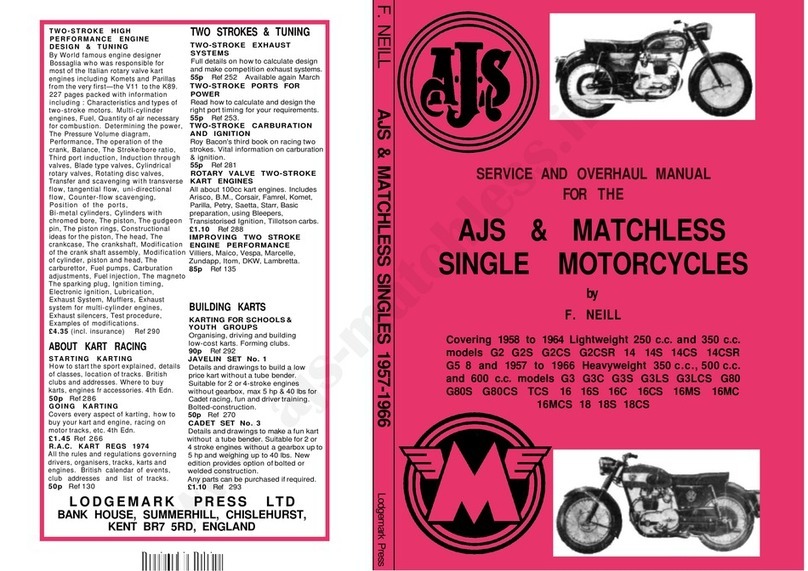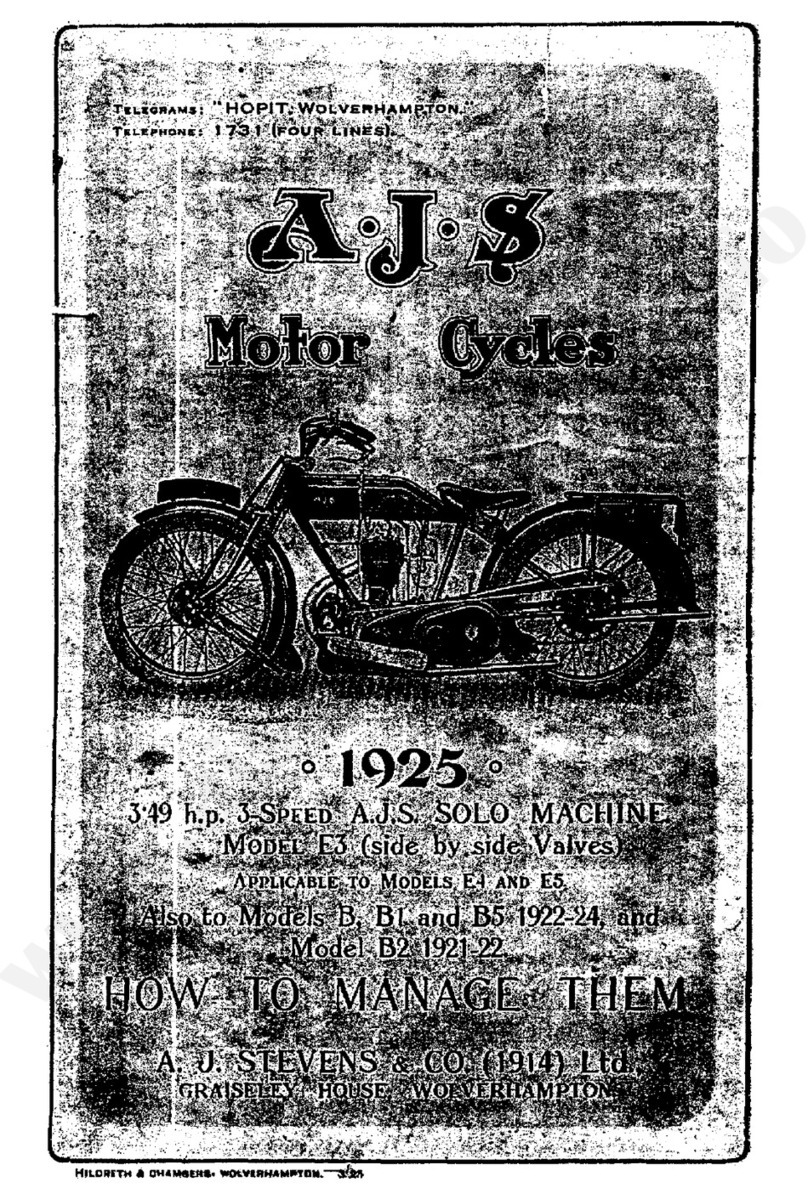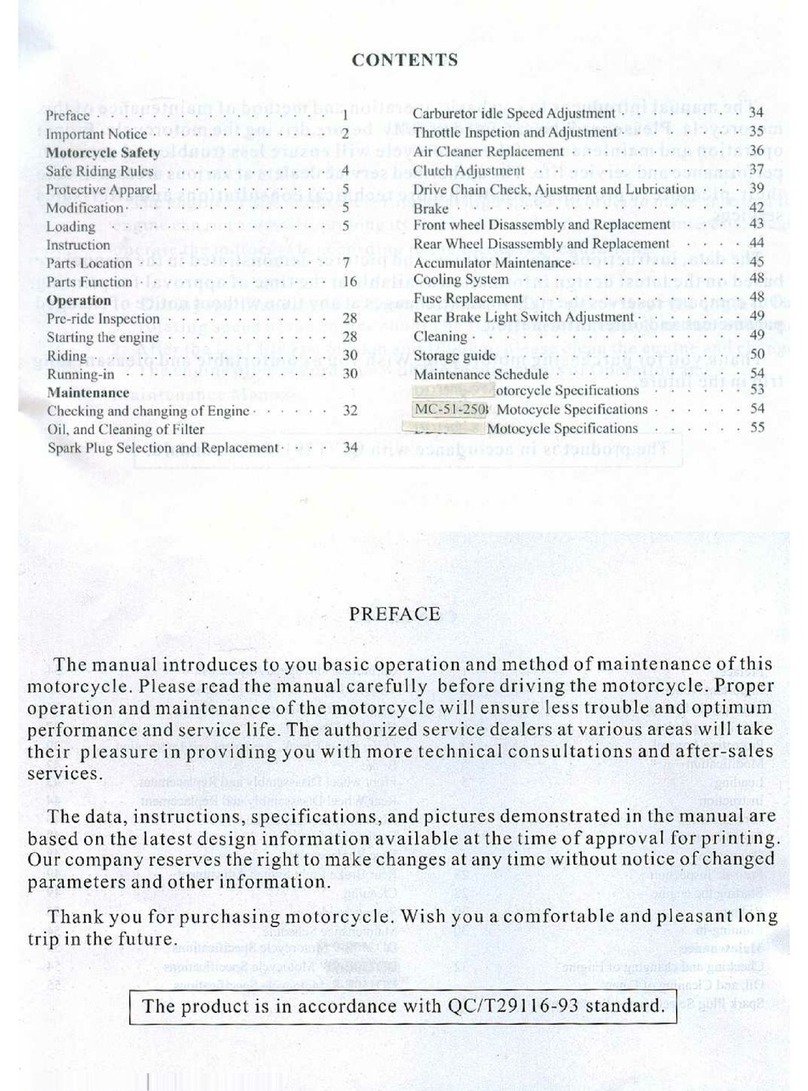
Instructions for safe operation
Motorcycle riding is great fun and exciting.
However, safe riding requires that some
extra precautions are taken and certain
observations are made. You must obey the
highway rules and observe traffic conditions.
Always wear an approved safety helmet.
Safe riding starts with wearing an approved
safety helmet.
This is an important factor of riding a
motorcycle. You must always wear a helmet that
meets current safety standards and is in good
condition. Always replace a helmet that has had a
knock or has been dropped.
Riding apparel
Wear suitable boots, gloves and jacket. Loose,
or unsuitable clothing can be uncomfortable and
unsafe when riding your motorcycle.
Always wear good quality motorcycle riding
apparel when riding your motorcycle.
Ask your dealer for advice.
Inspection before riding
Please read all the instructions in the INSPECTION
BEFORE RIDING section starting on Page 19.
Familiarise yourself with your motorcycle
Your riding skill and your mechanical knowledge is the
foundation for safe and reliable riding practices. We
suggest that you practice riding your motorcycle in a
non-traffic situation until you are thoroughly familiar
with your machine and its controls. Remember:
practice makes perfect. Learn how to confidently
operate, maintain and make adjustments to your
motorcycle.
Aftermarket and spare parts
Only fit genuine AJS approved parts and accessories.
To do otherwise, may be dangerous and may
invalidate your warranty. Seek advice from your
dealer. You can purchase AJS parts from your AJS
Dealer or directly from our web shop:
www.ajs-shop.co.uk
NOTICE TO USER
1
































